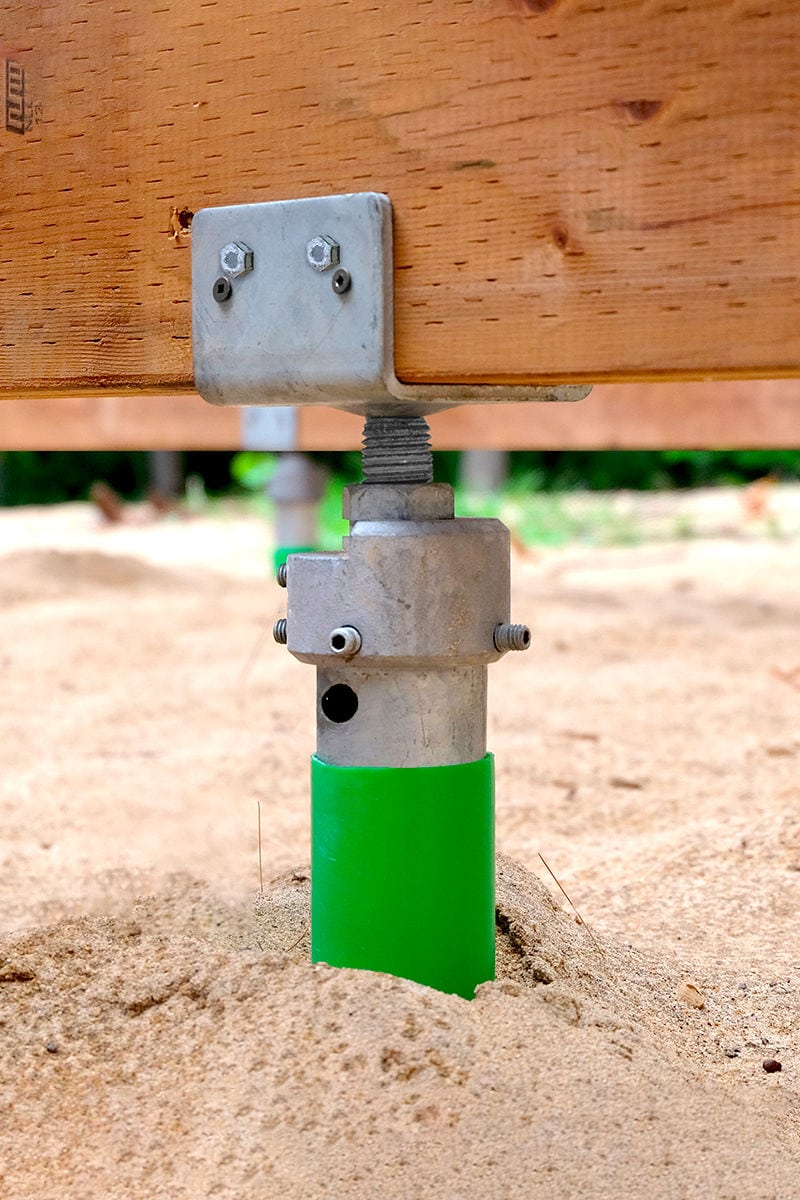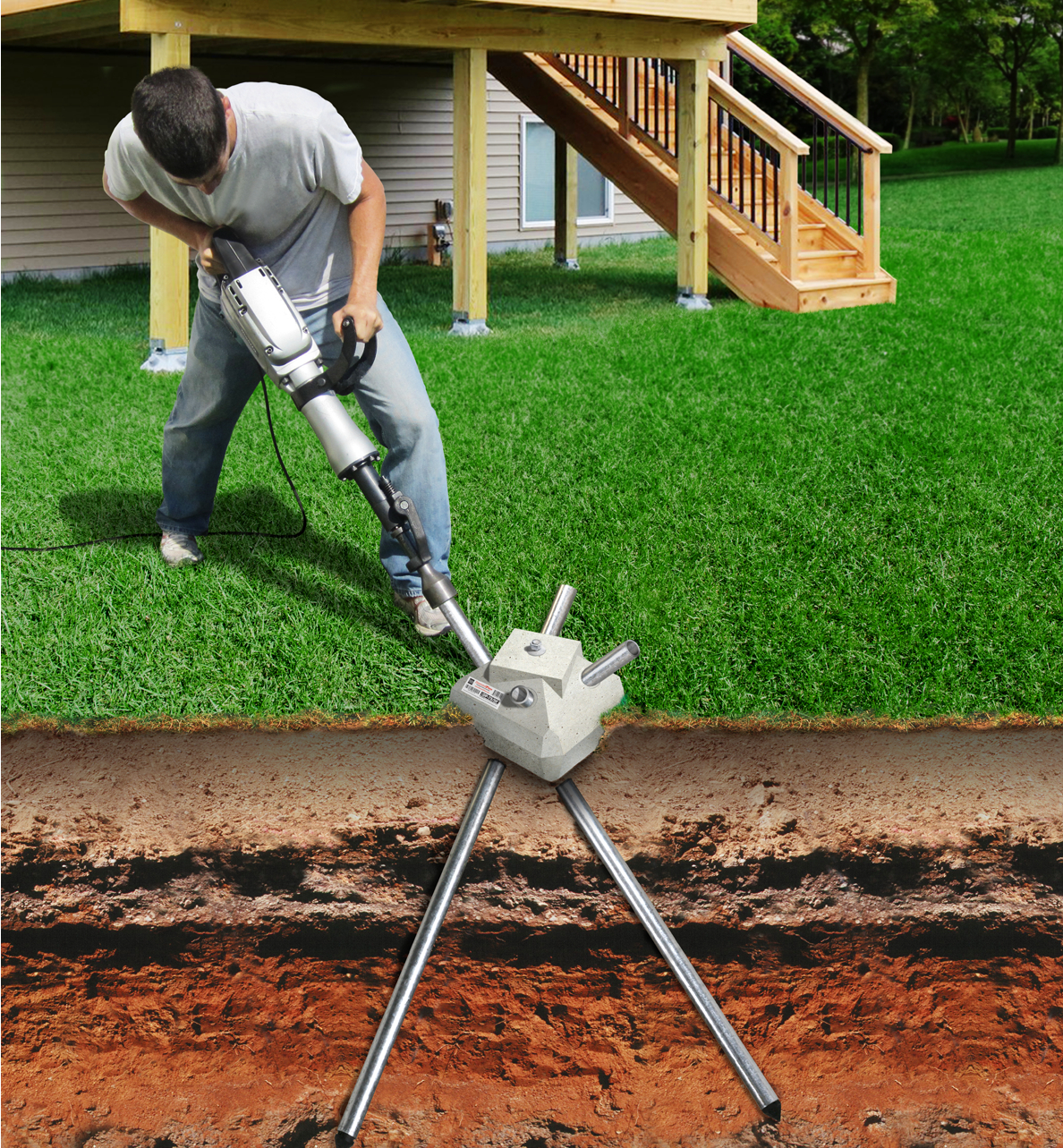Step-by-Step Deck Excellence: Making Sure Stability with Appropriately Set Up Deck Footings
Step-by-Step Deck Excellence: Making Sure Stability with Appropriately Set Up Deck Footings
Blog Article
Make Certain Stability and Durability With Properly Installed Deck Grounds
Deck footings may not be the most extravagant element of deck building and construction, yet they play a vital function in ensuring security and longevity. In this conversation, we will explore the importance of correct deck grounds, variables to take into consideration during installment, different types of grounds offered, detailed installation guide, and upkeep suggestions for making certain lasting footings.

Significance of Correct Deck Grounds
Why are correctly installed deck grounds vital for the security and durability of your deck? The solution hinges on the basic duty that deck grounds play in sustaining the weight of the whole framework. Deck footings are the foundation on which the deck relaxes, moving the tons from the deck to the ground. It can lead to an array of concerns that endanger the stability and long life of the deck. when grounds are not properly installed.
First of all, correctly mounted deck footings distribute the weight of the deck uniformly, avoiding any kind of uneven settling or sinking. This is specifically important in locations with unpredictable soil, as it assists to reduce the danger of the deck shifting or breaking down. Furthermore, well-installed footings guarantee that the deck stays degree, protecting against any type of architectural damages that can occur when a deck becomes unequal.
Secondly, effectively set up grounds provide a solid support for the deck, protecting against too much movement and guide. This aids to maintain the structural integrity of the deck, lowering the danger of mishaps or injuries. It additionally lessens the deterioration on the deck, permitting it to hold up against the elements and regular use for a longer time period.
Aspects to Think About for Deck Footing Installation
When setting up deck grounds, there are a number of essential aspects to consider for appropriate installment. Different soil types have different load-bearing capabilities, so it is critical to conduct a dirt test to guarantee the footings can sustain the weight of the deck and its residents. By taking into account these elements, you can ensure the proper installation of deck footings and appreciate a steady and lasting deck.
Kinds Of Deck Footings to Select From
There are a number of various kinds of deck footings readily available for you to select from. Each type has its own benefits and disadvantages, so it's vital to consider your particular needs and the conditions of your deck prior to choosing.
One typical sort of deck footing is the concrete ground. This involves digging holes in the ground and pouring concrete right into them to develop a strong foundation. Concrete footings are long lasting and supply exceptional stability, making them appropriate for decks in areas with challenging soil conditions or high wind tons.
An additional option is the helical pier ground, which includes a steel shaft with helical plates that are screwed right into the ground. These footings fast to install and can be utilized in various dirt kinds, consisting of sandy or clay soils. They are also adjustable, enabling for simple leveling of the deck.
Sonotube grounds are one more popular choice. These grounds are created by placing a cardboard tube in a hole and filling it with concrete. Sonotube website link grounds are relatively easy to set Web Site up and supply appropriate stability for smaller decks or in locations with less requiring soil conditions.

When selecting the kind of deck ground, it's important to consider variables such as soil conditions, deck dimension and weight, neighborhood structure codes, and individual preferences. By picking the ideal footing type, you can guarantee the stability and longevity of your deck.
Step-by-Step Overview for Setting Up Deck Footings

Identify the area: Start by marking the exact position of each footing utilizing risks and string (Deck Footings). Take into consideration any kind of neighborhood building regulations or laws relating to setback distances
Dig the openings: Use a blog post hole digger or an auger to dig the openings for the grounds. Normally, a depth of at the very least 36 inches is recommended for security.
Level the holes: Ensure that the bottoms of the holes are level (Deck Footings). This can be achieved by utilizing a level or a straight board throughout the top of the holes
Include gravel: Place a layer of gravel at the bottom of each hole to enhance water drainage and stop the ground from penetrating the dirt with time.
Place the footing kinds: Put the footing forms into the openings, ensuring they are centered and level. Use risks to secure them in position.
Mix and put concrete: Comply with the directions on the concrete mix bag to prepare the concrete. Put the concrete right into the ground kinds, loading them completely.
Smooth the surface area: Use a trowel to smooth the surface of the concrete and get rid of any kind of air pockets. Allow the concrete to treat according to the manufacturer's guidelines.
Maintenance Tips for Lasting Deck Grounds
Proper upkeep is crucial for ensuring the longevity and security of deck footings. By frequently checking and preserving your deck footings, you can stop damage and potential safety and security hazards.
Regular cleaning is additionally crucial for keeping deck grounds. Dirt, plants, and debris can accumulate around the footings, which can bring about moisture accumulation and degeneration. Cleansing the grounds regularly, using a brush or a pressure washer, can aid protect against these problems and expand the lifespan of your deck.
Along with cleansing, it is essential to maintain the area around the footings free from any kind of blockages. Stay clear of piling items against the footings or enabling plants to expand too close to them. These obstructions can trap wetness and trigger the grounds to wear away with time.
Last but not least, normal resealing this website of the grounds is advised to protect them from moisture and other environmental factors. Applying a water-proof sealant can aid avoid water damages and expand the lifespan of the grounds.
Conclusion
Finally, correct installment of deck grounds is crucial for guaranteeing stability and longevity of your deck. Variables such as dirt type, lots ability, and regional building ordinance need to be taken into consideration when picking the ideal sort of deck grounds. Adhering to a detailed guide for installment and normal maintenance will certainly assist to guarantee the footings continue to be sturdy and durable.
In this discussion, we will certainly explore the importance of correct deck grounds, variables to consider throughout setup, various kinds of footings readily available, step-by-step installment guide, and maintenance tips for making certain lasting grounds. Deck grounds are the foundation on which the deck relaxes, moving the load from the deck to the ground.One typical type of deck footing is the concrete footing. Insert the footing kinds: Put the footing forms right into the openings, ensuring they are centered and degree.In conclusion, appropriate installment of deck grounds is critical for ensuring security and longevity of your deck.
Report this page